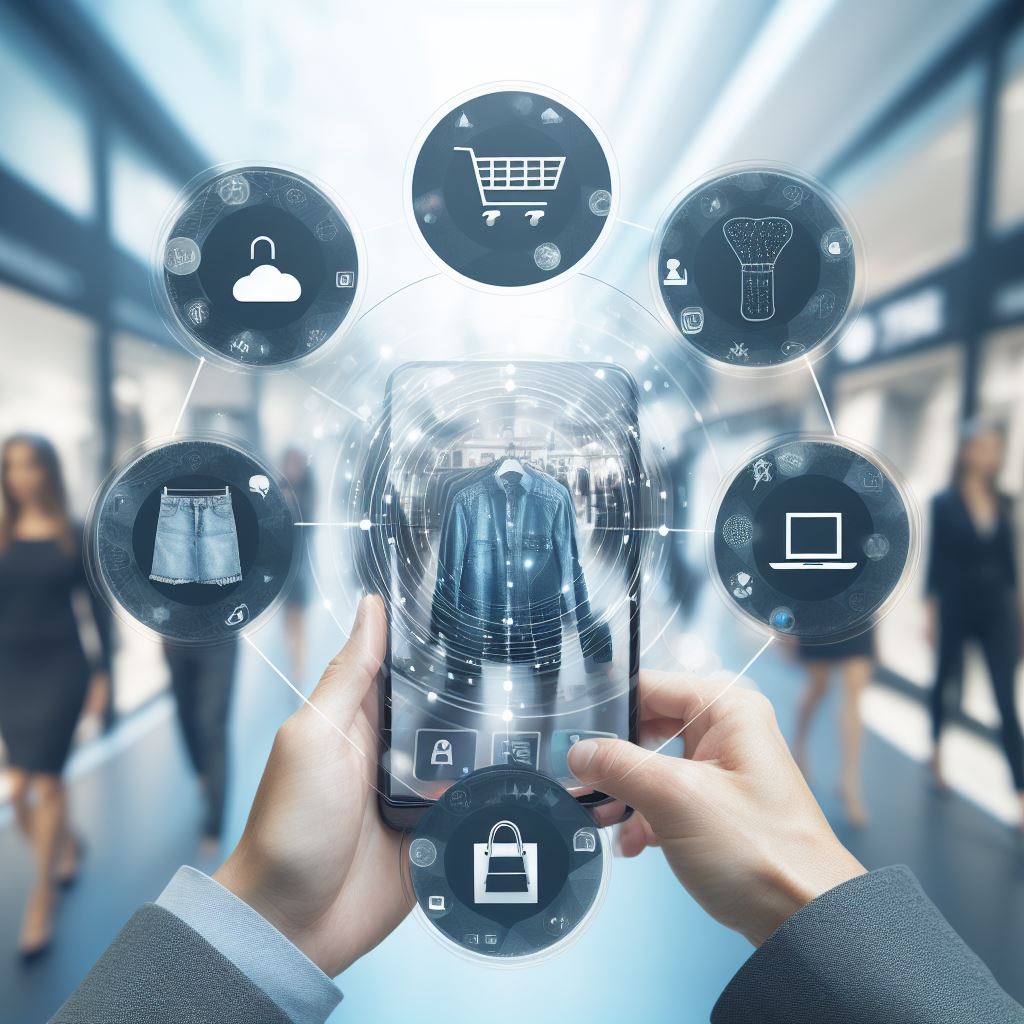BY CHRIS JONES | NOVEMBER 1, 2023 | 6 MINUTE READ
In today's fashion landscape, consumers are no longer confined to a single channel for shopping. Omnichannel retailing has become the norm, as customers expect a seamless and personalised experience whether they shop online, in-store, or via a mobile app. To meet these expectations, fashion brands integrate Product Lifecycle Management (PLM) systems within a connected enterprise business solution to support a unified and customer-centric approach. In this article, I explore how Fashion PLM can support omnichannel retailing and enhance the overall customer experience, focusing on augmented reality, virtual try-on, and personalised recommendations.
The Omnichannel Retailing Challenge
Omnichannel retailing aims to provide customers with a consistent and integrated shopping experience across various touchpoints. However, achieving this seamlessly can be a significant challenge for fashion brands. They must synchronise merchandising plans, order management, inventory, pricing, promotions, product data, and curated collections with customer data across online and offline channels. Additionally, they must cater to modern consumers' rapidly evolving preferences and behaviours who demand convenience, personalisation, and innovation.
In common with resolutions for many of the current challenges facing the fashion industry, any operational efficiency improvements are supported by effective integration between transactional and non-transactional processes, providing real-time updates to a centralised data set that offers a ‘digital twin’ for every entity across all business operations. Fashion PLM is just one element of a connected business solution that ensures product data is consistent for virtual and physical products and aligned with the latest merchandising updates.
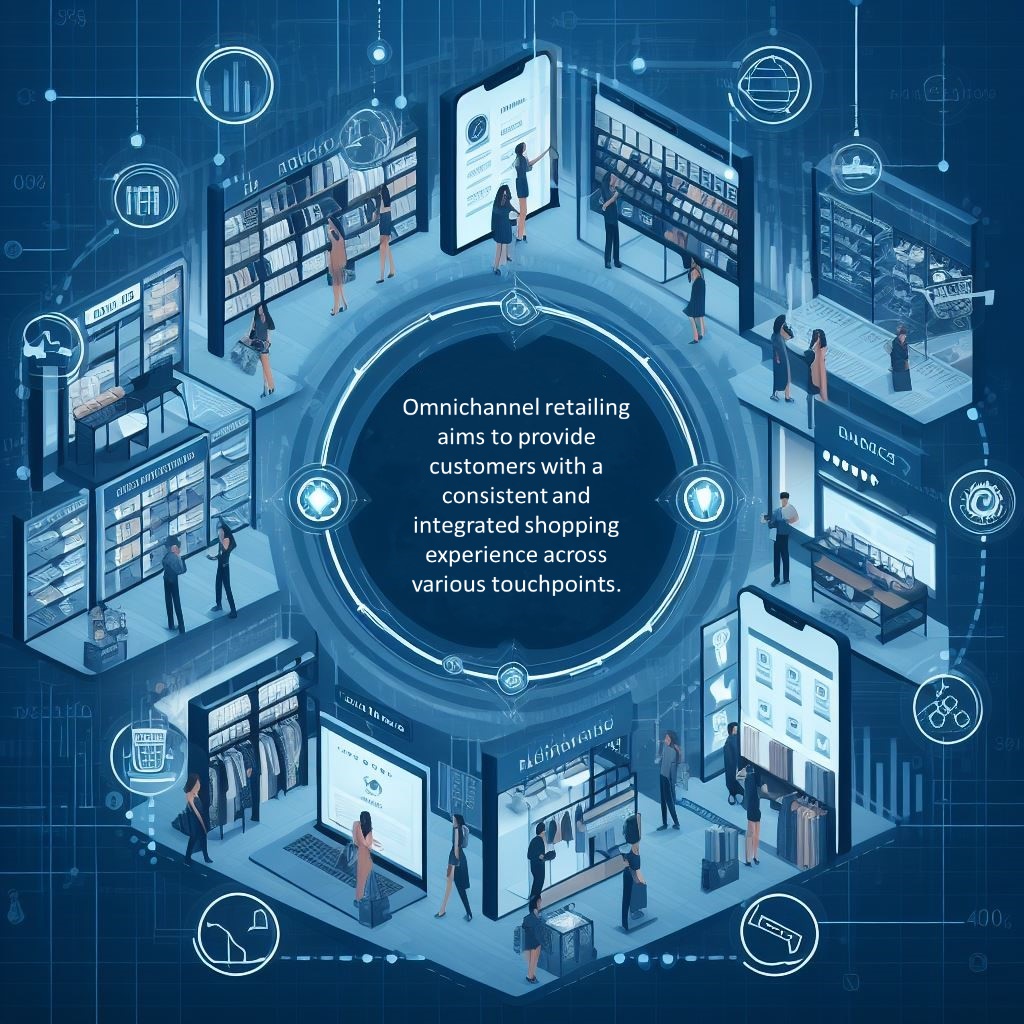
Connected and consistent across all consumer touch points - powered by DALL·E 3
Augmented Reality (AR) and Virtual Try-On (VTO)
Fashion PLM can play a pivotal role in a seamless omnichannel experience by providing connected data for augmented reality (AR) and virtual try-on (VTO) technologies.
AR is a technology that overlays digital information or images onto the real world, creating an immersive and interactive experience for the user. AR can be used in various ways to enhance the omnichannel retailing and customer experience for fashion brands, such as:
- Enabling customers to virtually browse and explore products in 3D on their smartphones or tablets without visiting a physical store.
- Allowing customers to virtually try on products in real-time, using their body measurements and preferences and seeing how they look from different angles and lighting conditions, whether in-store, online, or even on the street.
- Providing customers with additional product information and suggestions, such as features, benefits, reviews, ratings, availability, price, or complementary items.
- Engaging customers with gamified or social elements, such as rewards, badges, challenges, or sharing options.
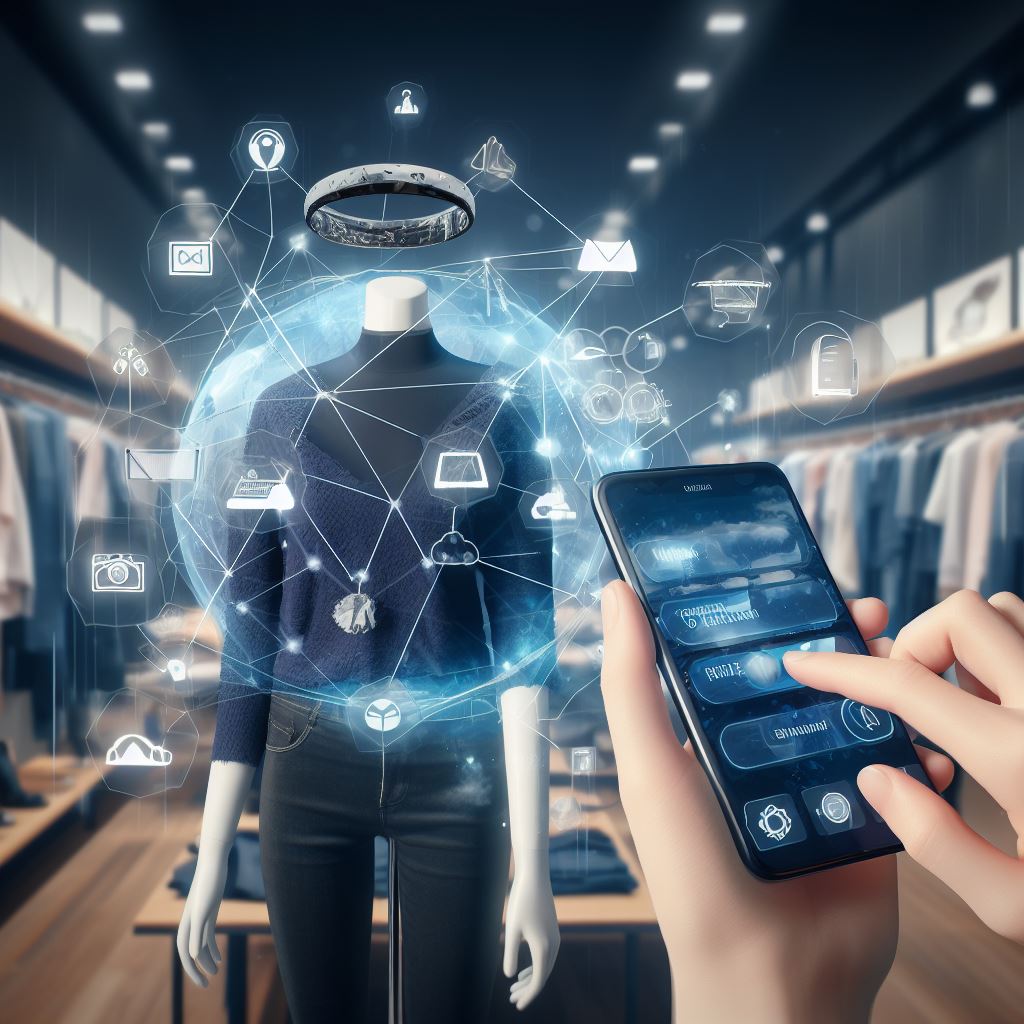
Augmented Reality for Fashion - powered by DALL·E 3
Virtual try-on is a technology that allows customers to see how products look on them before buying them, using either an in-store or public space ‘virtual mirror’, a webcam or a smartphone camera. VTO can be used in various ways to enhance the omnichannel retailing and customer experience for fashion brands, such as:
- Reducing the need for customers to visit physical stores or order multiple sizes online, saving time and money for both the business and the customer.
- Increasing customer satisfaction and loyalty by providing them with a realistic, available, and personalised preview of the products.
- Reducing returns and exchanges by helping customers choose the right products for their fit, style, and preferences.
- Increasing conversions and sales by encouraging customers to buy more products or upgrade to higher-value items.
- Creating more opportunities to capture consumer attention and convert to sales. For example, streets (store windows), pop-ups, malls, or travel hubs.
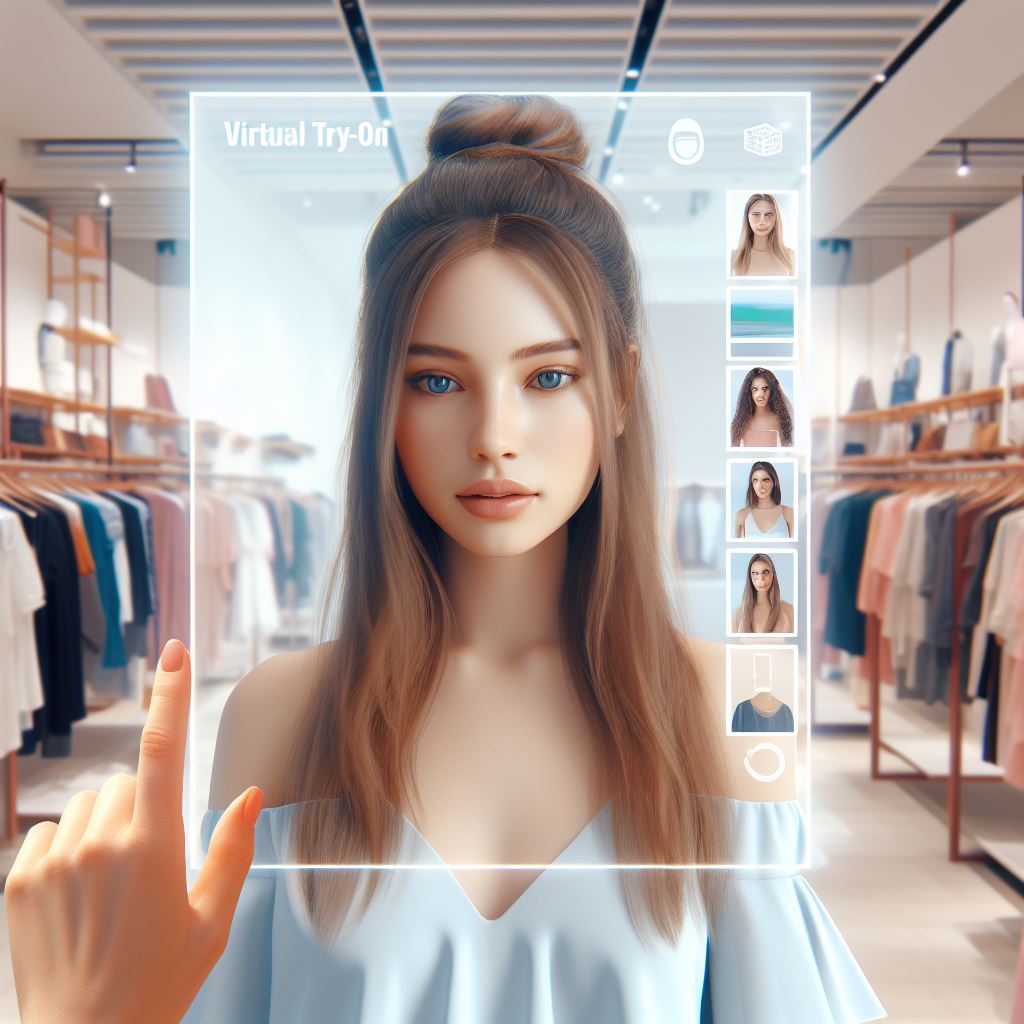
Virtual try-on - powered by DALL·E 3
Fashion PLM connects digital product creation (DPC) tools with enterprise solutions, data, and infrastructure and supports AR and VTO by providing accurate and consistent product data and images across all channels, ensuring that the virtual products match the physical ones. Fashion PLM can also enable brands to create and manage AR and VTO content and campaigns quickly and efficiently using templates, workflows, and analytics.
For online shoppers, AR and virtual try-on offer an immersive experience mimicking the in-store try-on process. Customers can visualise how an item fits, drapes, and complements their style, increasing their confidence in purchasing. For brick-and-mortar stores, AR mirrors and interactive displays can provide similar try-on experiences, enhancing engagement and encouraging in-store purchases.
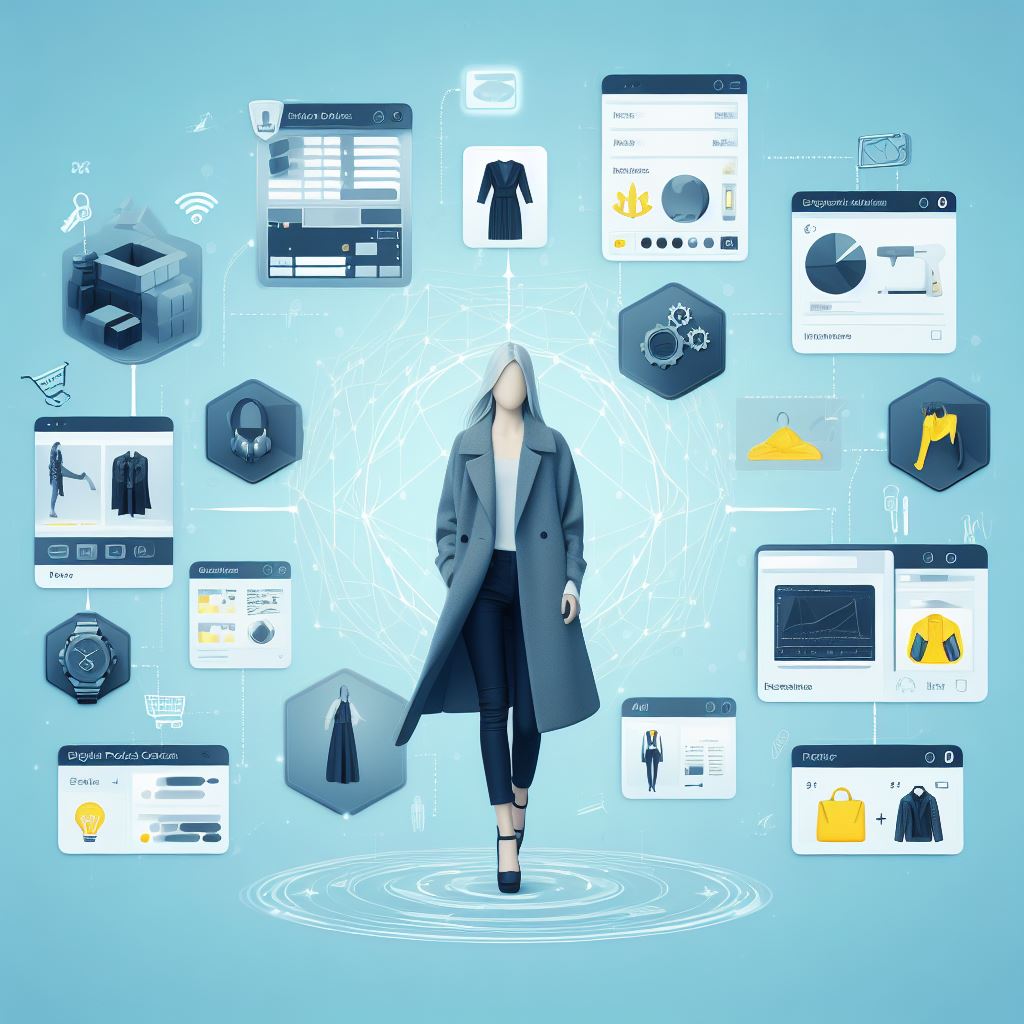
Product visualisations, data, and insights to support your customer - powered by DALL·E 3
Personalised Recommendations
Another key advantage of Fashion PLM in supporting omnichannel retailing is its ability to leverage the connection of customer, product, inventory, and sales data for personalised and practical recommendations.
Personalised recommendations are tailored to customers' preferences, behaviour, history, or context. They can increase customer satisfaction, loyalty, and retention, as well as conversions and sales in various ways to enhance the omnichannel retailing and customer experience for fashion brands, such as:
- Providing customers with relevant and timely offers or promotions based on location, season, occasion, or mood.
- Helping customers discover new or complementary products that suit their tastes, style, or needs.
- Creating a sense of exclusivity or belonging by offering customers access to limited-edition or curated collections.
- Building trust and rapport by showing customers that the brand understands and cares about them.
Fashion PLM can support personalised recommendations by providing accurate and consistent product data and attributes across all channels, enabling the use of advanced algorithms or artificial intelligence to generate recommendations.
By integrating PLM with customer relationship management (CRM) systems, data analytics, and retail planning and merchandising data sets, brands can gather insights into individual shopping behaviours, preferences, and purchase history. The digital twin for every entity must be aligned, and only then can tailored and consistent product recommendations be delivered to customers across any channel.
Personalisation enhances the customer experience by showing shoppers products relevant to their tastes and style. It increases the likelihood of conversion and encourages repeat business. Whether a customer is browsing a brand's website, using a mobile app, or visiting a physical store, personalised recommendations create a sense of individualised attention that fosters loyalty and brand affinity.
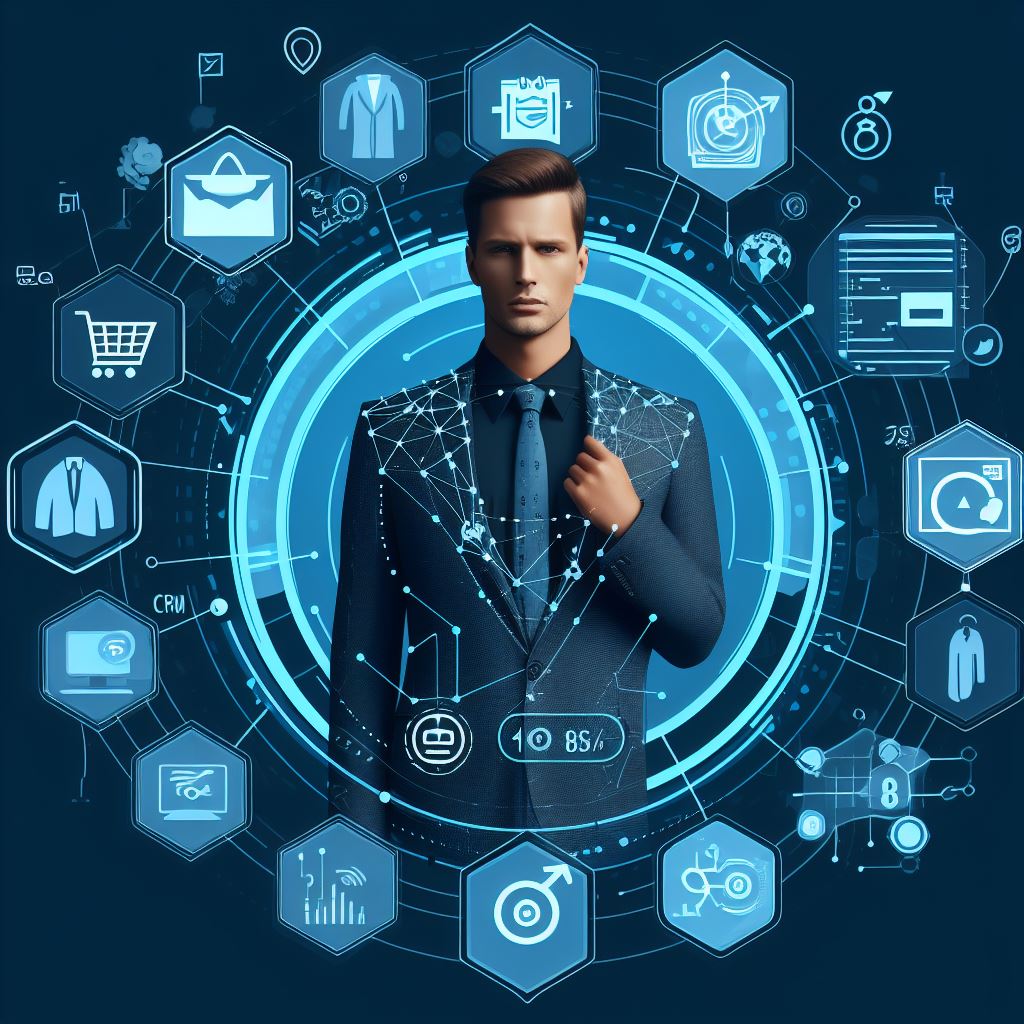
Aligning ‘digital twins’ to power customer personalisation - powered by DALL·E 3
Seamless Inventory Management
Fashion PLM also supports omnichannel retailing by connecting with real-time inventory visibility and management. With accurate inventory data accessible across all channels and continuous real-time feedback from AR, VTO, sales data, and merchandising updates, brands can prevent issues like out-of-stock items or overselling. Customers can be confident that the items they see online are available in-store and vice versa, eliminating frustration and improving the overall shopping experience.
Conclusion
Omnichannel retailing is not just a trend but a necessity for fashion brands that want to stay competitive and relevant in the digital age. Through integration, Fashion PLM has evolved from a tool primarily focused on product development and supply chain management to a key enabler of effective omnichannel retailing and customer experience enhancement. Augmented reality and virtual try-on technologies bridge the gap between online and offline shopping, while personalised recommendations cater to individual preferences. Additionally, seamless inventory management ensures that customers can always find the products they desire, regardless of the channel they choose.
As the fashion industry continues to evolve, brands that leverage Fashion PLM to support omnichannel retailing and enhance customer experience will be better positioned to meet modern consumers' demands. By creating a unified and personalised shopping journey, fashion brands can build lasting relationships with their customers to increase customer satisfaction, loyalty, retention, conversions and sales and drive growth in an increasingly competitive marketplace.
Author Chris Jones
Chris has helped global brands, retailers, and manufacturers align people, processes, and technology for over three decades, driving transformation projects to maximise business impact.
This article is also published on LinkedIn: How Fashion PLM Can Support Omnichannel Retailing and Customer Experience (www.LinkedIn.com)

